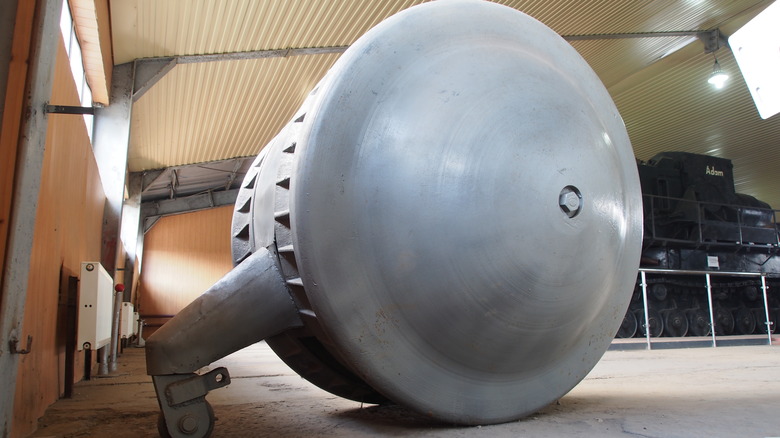The Kugelpanzer Is One Of The Most Mysterious Military Vehicles Ever Made
Tanks and armored combat vehicles have been around since the first World War. Over 100 years ago, the first tanks were slow, hard to maneuver, and prone to failure. However, in World War II, tanks started showing up in much larger numbers and became part of both the Axis' and Allies' battle doctrine. Vehicles like the American M4 Sherman tank, the Nazi Panzer series of tanks, and the Russian T-34 tanks were all used extensively throughout the entire conflict, and have become eternally present in every movie, video game, and story about the war.
Prior to being defeated by the Allied forces, Nazi Germany was responsible for developing several technologically advanced (for the time) tanks like the Tiger I — a vehicle that proved to be very difficult to knock out of combat by Allied tanks. Ferdinand Porsche, the founder of Porsche and himself a member of the Nazi Party, even penned a few designs for the Nazi war machine; including an entirely separate tank, also called the Tiger.
But for every successful and well-known design to come out of the Third Reich, there are several that either never saw combat or (thankfully) never made it past the prototype stage. One such vehicle is the enigmatic "Kugelpanzer."
Still a mechanical mystery
In German, "Kugelpanzer" means "ball tank," and that's an apt descriptor for the spherical would-be menace. Overall, not much is known about the Kugelpanzer, except that it's shaped like a ball and was recovered from somewhere in Axis territory during the closing days of World War II.
The history is not clear as to where the Kugelpanzer came from exactly, but it was possibly either lent to Imperial Japanese forces as the war came to an end, or it spent its days rolling around Nazi-occupied tank proving grounds (via Tank Encyclopedia). Either way, the Kugelpanzer ended up in the possession of the Soviet Red Army in its sweep through Europe.
The sole existing example of a Kugelpanzer consists of two rotating hemispheres, a smaller outrigger wheel behind it, and a small slit the driver was supposedly meant to see out of. It was likely a reconnaissance vehicle, and as such, it would have had limited offensive capabilities. Armament was more than likely a German or Japanese light machine gun, and power was allegedly supplied by a two-stroke motorcycle engine. If that is indeed the case, the Kugelpanzer would have a top speed not much faster than a brisk jog (via Tank Encyclopedia).
Today, the weird ball tank lives in the Kubinka Tank Museum in Russia, where Western experts have been unable to study it further.
